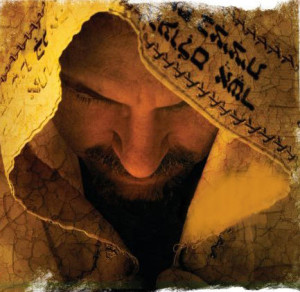What is Tefilla?
 When discussing a concept and its essential meaning, the first step is understanding what the word itself means. One of the greatest misconceptions and poor translations in Tefilla as prayer. Those are two almost opposing concepts. In order to best understand a word in Hebrew, we must go to its root.
When discussing a concept and its essential meaning, the first step is understanding what the word itself means. One of the greatest misconceptions and poor translations in Tefilla as prayer. Those are two almost opposing concepts. In order to best understand a word in Hebrew, we must go to its root.
Prayer, in its essence, means to beg for one’s life. The image of prayer is a person kneeling down on one knee, praying for his life to be spared from punishment from the authorities. It is a Christian term, derived from Christianity’s historical origins of oppression, death, suffering and hardship. The word “prayer” implies that we are victims, and need to plea our case to be spared from whatever fate lies ahead. That is not the Jewish concept of service to G-d, and is in fact the antithesis of the Jewish concept.
Every word in Hebrew has a root word, which is generally three letters. Understanding the meaning of the root word is the key to understanding the essential meaning of the word itself. Tefilla in Hebrew is spelled – תפילה and its root word is פ.ל.ל. Let us examine the two opposing meanings of that very same root word.
The first meaning for the root word of פ.ל.ל. is above and beyond nature, miraculous. The source for this meaning is when Ya’akov sees his son Yosef for the first time in 22 , Ya’akov says. For 22 years Ya’akov lived under the false impression that Yosef was eaten by wild animals, and he never fully recovered from mourning for his lost son, let alone see Yosef as the 2nd most powerful man in the known world. For Ya’akov, the experience of seeing Yosef again was nothing short of miraculous. Therefore, lending our first understanding of Tefilla as something that goes above and beyond the laws of nature.
The second meaning for פ.ל.ל. is criminal or by the law. The word in Hebrew pelili means a criminal activity. A source for this explanation is the Torah’s description of Pinchas’ zealousness. When Pinchas commits an act of zeal against Zimri Ben Salu, which was justified by G-d and stopped the plague of the tribe of Shimon, the Torah describes it is “ויפלל” – that Pinchas did justice by stopping the criminal. This lends the second explanation of Teflla as an act that is in line with nature and the law itself.
How do we reconcile these two opposing interpretations of the very same root word? On the one hand, Tefilla goes above and beyond the laws of nature, and on the other hand is in line with the letter of the law itself. Let us explore the dilemma of Tefilla itself and its purpose in order to properly understand the balance of these two conflicting aspects of Tefilla.
The most fundamental question regarding Tefilla, and maybe the most mysterious aspect of what Tefilla is all about, is how does Tefilla actually work? When we engage in the act of Tefilla, requesting various wants and wishes from G-d – how does our Tefilla help determine the end result? For example, take Danny, a father of 4, who needs extra income. Danny asks for more parnassah, livelihood, from G-d in his Tefillot for an entire week. Wil that help Danny’s financial situation? For arguments’ sake, let us assume it does. Did Danny change G-d’s mind? That would go against the belief the G-d is all knowing and all powerful. If G-d determined Danny to go through financial hardships, how can 1, 2 or even multiple 5 – 7 minute session of excursion in Tefilla help Danny’s cause? G-d has determined this man’s fate, and even if fate’s can change (which Judaism certainly believes they can), how would Tefilla make any difference? Simply because of Danny’s request for financial stability?
The answer is that Tefilla does not change G-d, it changes the person himself. This is the key to understanding all of the questions we have posed. The false conception is that a man engages in Tefilla in order to change G-d’s mind. But G-d’s mind cannot be changed or shifted. G-d is All Knowing and omnipotent, not transient and ever-changing. Tefilla reminds us how to change ourselves, and provides a platform to the greatest self-help mantra exercise a person can practice. Repeating the mantras and messages of the Tefilla creates new pathways in a person’s mind and allows man to elevate himself spiritually. If one man’s fate, Danny for example, is to have financial hardship, that is the case for the Danny at that moment in time. However, when Danny works on himself and elevates himself spiritually, he is no longer the same Danny, he is a new person. And that “new person’s” fate is now changed and may no longer need financial hardship.
An analogy to this is a father’s gift to a child. The father wants to give, however the father will not give anything to the child at any point, he will be selective. If a father gives a child money, it is only when the child is ready to receive the money and use it responsibly. If a six year old child requests power tools, for example, it will wise for the father not to give those tools, since the child is clearly not ready for it and it would be irresponsible to give that gift to his child. Once the child grows up and shows responsibility, and asks for the power tools again, the father would be more than happy to give the gift, since the father wants to give. But will only give when the child is ready. So too, G-d only gives us when we are ready and for that we must change ourselves through Tefilla and our own spiritual work.
Tefilla, then, is the balance between receiving exactly what we deserve, and on the other hand, providing us the opportunity to grow and elevate ourselves to another level, beyond our current state. That is the balance between both understandings of Tefilla – it is getting what we deserve, exactly to the level we are currently at, with also serving as a platform to raise our level and change ourselves.
It is truly the greatest opportunity for growth that we have, if used properly.
The Tefilla Project / Rabbi Ariel Tal
(Adapted from the lecture on Prayer by Rabbi Akiva Tatz on simpletoremember.com)





